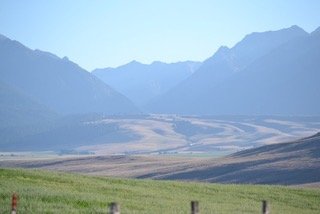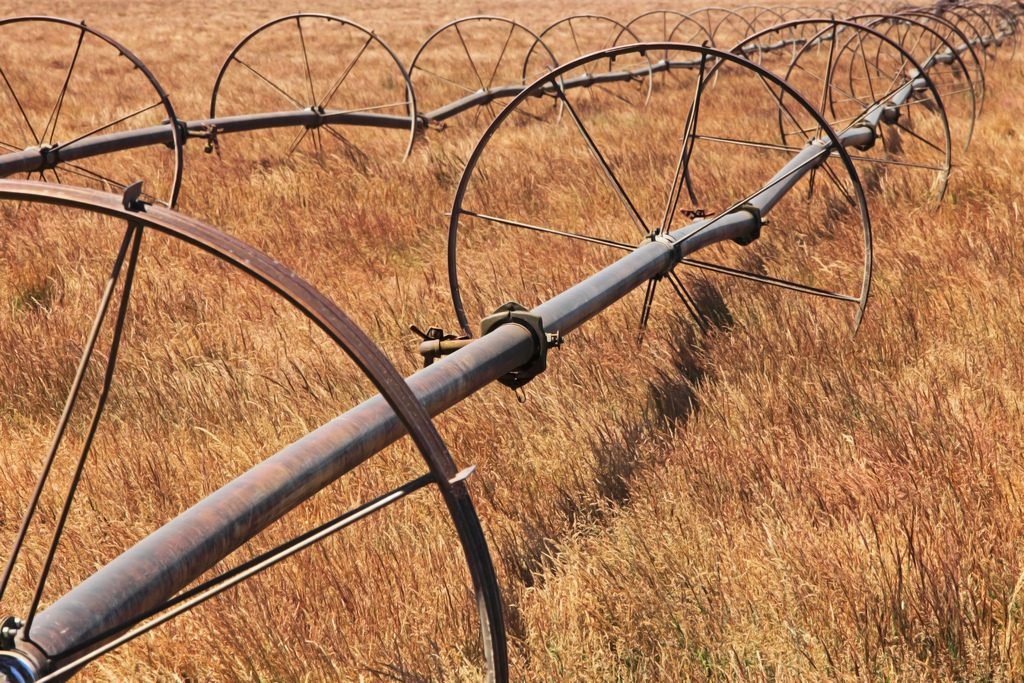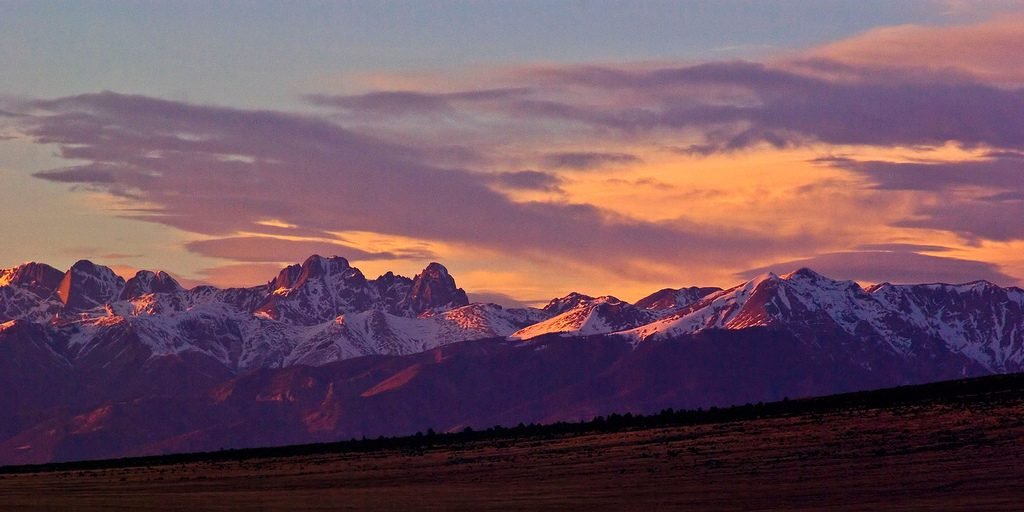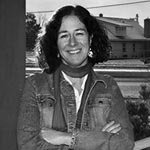
I understood the world around me on Promise Road. I felt at home on the edge of the rolling valley, looking out at the distant mountain range. I learned to fight creeping Charlie, pigweed and cheat grass with soil enhancement, rotational grazing and early weeding. I recognized the arrival of summer as the swallows began daubing their mud nests above my windows, swooping through the evening sky to clear the air of mosquitos. I named the bats that flew in my open doors on warm summer evenings, searching corners and hallways for moths. Over time, I learned to watch the storms, understanding that the northwest flow of weather brought rain and snow and wind, but that the occasional southern storms were the most fierce, the ones that shook the windows and ripped huge branches from the elm tree in my yard. I knew to search sheets and blankets and clothing from July until November for dazed and dying yellow jackets, eager to sting nearby flesh.
Past and present mingled when I returned to the house where I grew up, but soon 3,400 square feet of history became too much for one single woman. I remembered my mother telling me “You’ll inherit this house just like I did. If I were you, I’d sell it as fast as you can.” She always wanted me to flee Wallowa County, but I was happy to migrate home. Now I had a smaller move in mind—a short 30 miles to the other end of the county. I left Promise Road, the open valley floor, my grandfather’s ranch, and our two-story farm house to snuggle into a tidy cabin sheltered by towering ponderosa and fir, guarded by ancient peaks.
Exploring my new property, I find nothing familiar. The Alpine grass at 5,200 feet grows thin and early, quickly consumed by my grazing equines. Storms come from a different direction, barreling up from the valley below, pushing clouds, wind, rain, and snow up the draw toward my house. Thunder rips the fabric of the sky, echoing off the mountains. Different species of weeds invade pastures, roadsides and my lawn, leaving me to wonder how to manage their spread. No swallows nest under the eaves of my house and only one bat has dared venture in my open sliding glass door. Even the bees look different—no yellow jackets here, only small, black wasps with a vicious sting and huge, black biting flies.
In spring, the snow stayed late around my cabin, lingering in patches long after the grass began to grow at lower elevations. May arrived before I could safely navigate the road with truck and horse trailer. It was June before I saw green rather than white in my yard. Record highs this summer scorched the valley, but I needed a light jacket every afternoon. And now, fall sneaks in. The sun quickly retreats behind Mt. Joseph, bringing cool temperatures and long shadows. A warm, dry breeze drifts up through the pine trees. It whispers of the coming winter. It stirs anxiety, which soon quakes in my chest.
I love autumn, with its dusty, warm afternoons, golden colors and crisp mornings. But each year, as my favorite season approaches, my joy overlays a certain dread of the long, dark days of winter that will inevitably follow: the drudgery of breaking ice on water tanks, trudging through snow with flakes of hay and pans of grain, shoveling walk-ways, hauling firewood, leaving and arriving home in darkness. Here lies the next source of my angst: The anticipation of the trials of winter leaves me to wonder, how will I manage on my own?
The cold, the darkness, the extra work intensify the loneliness that follows me like a shadow. I chose this secluded location, entranced by the whisper of wind in the evergreens and the shelter of ancient pine and fir trees. Yet the gloom of winter turns solitude to isolation. Add to my seasonal concerns the pressures of a ‘part-time, temporary’ job that devoured my summer, the distress over a friend with a recent cancer diagnosis, the pain of watching another friend’s marriage implode, and I have the perfect ingredients for self pity. Confusion, loneliness, fear, disappointment and a sense of loss push me now, toward a different kind of landscape, one that might dwarf my problems and clear my mind of self-indulgent whining.
As a child, bouts of restlessness drove me to the hills and the hay fields to hop across mossy fields of basalt, climb forbidden haystacks and ramble through deteriorating barns. After leaving home for college and living in more urban environments, I found solace in courtyards, under trees, and on empty sidewalks. I drove through city streets and hid in libraries and bookstores, any place I could find anonymity within a crowd. Today I seek sanctuary in a bigger landscape. I flee to the eastern edge of the county, away from the dense timber of the mountains onto rolling grassland and into the deep canyons best viewed from Buckhorn Lookout.
I climb into my white Ford F-350 flatbed, fire up the power stroke diesel, and whisper a prayer to the gods of rubber and steel-belts to protect me from flat tires. In a rush, I don’t bother to unload the back seat of my pickup, content to be surrounded by the smell of dirt, sweat, and horse hair that rises from three saddles, four dirty blankets, a fly sheet, and a box of brushes and grooming tools. My collection of English tack marks me as an oddity in this Western ranching and rodeo community. The fact that I appear about town in everything from breeches and tall English riding boots to Carhartts and Muck boots or fine, more feminine wear enhances the nebulous nature of my identity: Horse girl? Ranch girl? Yoga teacher? Medical specialist? Witch doctor? Today, I move into solitude. Bottles of Bridgeport IPA clink together in the cooler as I angle the pickup down the washboard surface of my drive. I exhale and relax into the steady rhythm of techno-dance music emanating from my I-pod.

The road to the canyon country veers east off the highway, cutting through acres of irrigated farm ground that produces some of the best grass hay in the northwest. Shiny silver wheel lines sparkle in the afternoon sun as they nourish the crops for a late summer cutting. Turning north, I leave the valley floor and follow the road as it turns from pavement to gravel and climbs through the dry, basalt covered draw that leads to the vast prairie beyond.
Clumps of pungent sage and bunchgrass dot the hillside. Hardy ranchers graze even hardier cattle on this land, containing the wandering beasts with strands of tough barbed wire anchored by wooden rock jacks filled with piles of basalt. I’ve built and repaired a little fence in my day, and I marvel at the sweat and toil that went into placing boundaries on these rugged hillsides.
The big Ford engine strains slightly as my foot presses the accelerator, and I crest the rise. Warm breeze from the open windows tousles my already disheveled hair. I reach forward, turn up the volume on the steady, rhythmic tunes and smile. The range opens before me, covered in an ocean of brown and gold, rolling toward the horizon, spilling into craggy draws.
I stop to look around and snap a few photos. To the east I catch my first glimpse of the azure outline of the Seven Devils, which lie across the canyons, beyond the Snake River in the center of Idaho. Behind me, the craggy outline of the Wallowa Mountain range borders the southern end of the valley. I face forward and gaze at the road ahead—straight, wide, dissolving into the horizon. I lift the lid to the cooler, open a cold beer and consider my journey.
I never feel comfortable in wide-open space. Dread creeps in. The vast sky, the distant skyline, the lack of boundaries across truly flat land leaves me feeling vulnerable and exposed. I recall driving through the Kansas plains with an old boyfriend. As he slept, exhausted from a vision quest and ten days at a Sundance, I found myself alone in his company. My head throbbed from dehydration and lack of sleep. Disoriented by the endless prairie, I gripped the wheel tightly, managing my breath to keep the eruption of panic at bay. With each passing mile I squirmed in my seat, longing for my first glimpse of the eastern slope of the Rocky Mountains. I thought of the settlers and the dust bowls and understood the madness that overtook many young pioneer brides.
As I drive out of the draw, I am grateful that the prairies of Wallowa County roll enough to add texture to the space, and that mountain ranges, however distant, border me on three sides. I can feel safety in this openness, an opportunity to expand with the terrain. Eventually, the undulating range rolls into hills. I round the corner and find a homestead, nestled in a draw. Battling the wind, snow and heat of these harsh lands, the owners planted and tended a grove of non-native willows to provide shelter and shade. Just over the hill, a larger grove of native aspens thrives in a north-facing draw, surrounded by protective fence provided by the Oregon Department of Fish and Wildlife’s conservation program.
I have reached the edge of the Zumwalt Prairie, a 33,000-acre preserve owned and managed by The Nature Conservancy. Home to dense bunchgrass habitat, numerous species of hawks and birds, and a vast herd of elk, the Zumwalt is the largest grassland of its type in North America. The popularity of environmental tourism sites explains the stream of Hondas and Prius driven by urban folk with furrowed brows, frustrated that they must travel such distances on primitive roads to wonder at natural biodiversity. Few will make the full journey to the lookout, which lies another twenty miles ahead.
Most will see the green road sign and turn around or turn right toward Imnaha, following a narrow two-track road as it snakes across the preserve and winds into Trail Creek. Eventually they descend into the rocky draws that lead to the tiny town, stopping long enough to have a beer and order of fries at the infamous Imnaha store, home of the annual bear and rattlesnake feed, the canyon country’s alternative to a chili cook-off.
Already my racing mind and anxious thoughts have eased as I marvel at the expanse around me. A subtle haze dusts the cerulean sky, residue of the wildfires burning in Washington and Idaho. In the distance, land meets air with razor sharpness. Clarity. Gravel pops and snaps beneath my tires, and I smile at my choice to bring the truck instead of my Subaru. My last adventure here cost me a sidewall and required a new set of tires. I pop another beer, and continue my quest. The northern timber beckons.
I press forward and pass several large pickups that remind me bow season opened today. Mid-afternoon eases into evening, and hunters prepare for the arrival of cooler temperatures and moving herds. As the landscape morphs from open prairie to timber and draws, I soften again, resting more deeply into my seat. I stop to shoot more photos, turning off the rumbling engine. The shhhhhhhhh of breeze whispers through ancient ponderosa. The sound caresses my skin. I close my eyes and breathe in the music of home.

The road winds out of the sheltered valley and up onto the ridge. In the distance I see my destination—the point jutting out into the canyon, exposed and open, resting at the edge of the world. Campers and pickups nestle under groves of trees just off the road, housing hunters and their families. I recall my original plan, to sleep alone on the bed of my pickup at the lookout and greet the sun as it rose over the canyon wall. This seemed a perfect celebration of my solitary life, a beautiful buffer against loneliness. I’d forgotten about the season, the hunters, the strangers. I’m glad now, to be making a day trip.
I follow the signs and emerge at Buckhorn Lookout. Pulling around the circular drive, I kill the engine, grab my camera, and hop the long distance down from the big truck. The pungent scent of cinquefoil and sage tickles my nose. A subtle breeze brushes my cheek, welcoming me as I close my eyes and inhale more deeply.
Turning, I stride slowly forward. My flip-flops slap my heels, and my eyes widen as they always do in this place. No matter how many times I see it, the beauty of the Imnaha River Canyons shocks me. Ridges and draws overlap and melt together, cascading into narrow gorges. I find a wide, flat rock and take a seat. To the right, the white toothpicks of fire-killed trees rise amidst the green of new growth. To the north and east, the layers of canyon walls dissolve into one another, worn by thousand or millions of years of northward flowing water. In the south, Idaho burns, a roiling cloud of white, emerging from a dense haze.
Silence rises from the canyon bottom. The sun warms my back as it makes a late-afternoon descent. Before me lies centuries of geological evolution, created by a persistent, immovable flow. I feel the solitary nature of every rock, every grain of earth, every drop of water as it brushes against its surroundings, changing what it touches even as it changes itself. Perhaps this is what we all do as we move through this life—we brush up against each other, against our own natures, against our circumstances. Sometimes we stick, rolling into a ravine together. Caught in the tension and movement of each situation, we seldom step back to recognize the breadth of the world around us.
The deep thwop-thwop of helicopter blades breaks my trance. I look up and see the tiny black dot moving swiftly through the blue sky, away from the billowing white smoke of the Idaho fires, a reminder of the futility of man’s battle against Mother Nature. The echo of the rotors fades quickly, and peace returns. I rest awhile, in contemplation.
The golden afternoon sunlight adds a deeper magic to the views on the way home. My brief encounter with earth, rock and sky has cleared my mind and opened my senses. My thoughts rest, at the back of my skull, displaced by wonder and a sense of my own insignificance. As my wheels quietly bump from gravel to pavement I breathe another prayer—this one of thanks for the strength of my tread.
Rolling into the valley toward home, the sinking sun highlights the textures of the moraines that flow from the mouth of the Wallowa Lake drainage. For the first time, I notice the liquid nature of earth pushed forward by the ancient moving glacier that carved the valley and melted to become the lake. On the western slope, I see the trees that hide my house. From this vantage point I see that, even when the forces around me are beyond comprehension, when the progress is too slow to feel, the deepest forces of the earth draw me forward, into a life I can’t yet imagine.
Over the years, I butted my head against a wall of expectations, those of my mother and myself; I’ve fallen again and again, battered by failure, disillusion and disappointment. I strode into the world to make something of myself, to escape my humble beginnings, to live my mother’s life. She pushed me, as far away from Wallowa County as she could push me. An education, she told me, a career, a city, these are the things you need. These are the things that will make you happy, make you a success. She built a wall between me and this land, hoping I would never find a doorway back through.
Racing through my life made it easy to avoid difficult questions. Returning home, to a place rich with memory, experience and history offered a unique challenge. Leaving that place behind challenges me in ways I didn’t expect. In the familiar space of my Promise Road home, images from childhood sprung up, uninvited. I met my grandpa there. I lost him there. I knew my mother there, battled with her and eventually lost her there, too. On that landscape I fought a torturous war with my father’s dementia and eventually discovered the hard-won peace of conflict resolved. In that place, all the contradictions of my life came together to push me into a new life—my life, sometimes lonely, often solitary, but always mine.


Share this post with your friends.

